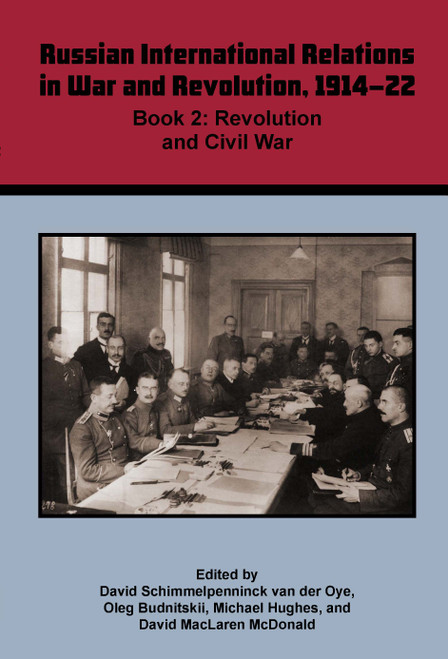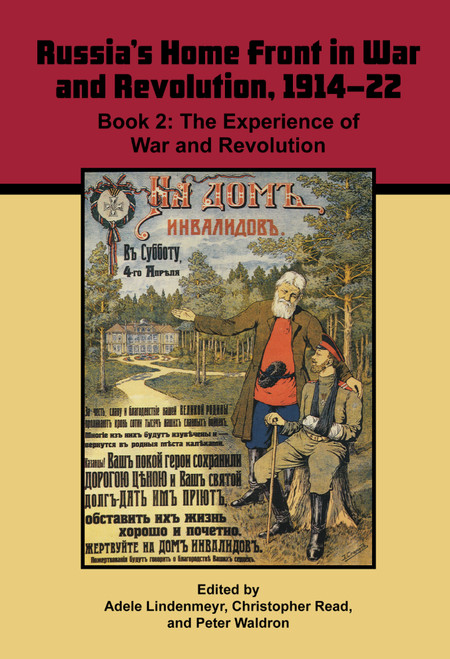Product Overview
The Russian Revolution of 1917 was quickly perceived by both contemporaries and subsequent scholars as not merely a domestic event within the Russian Empire, but as a systemic crisis that fundamentally challenged the assumptions underpinning the existing international system. The revolution posed striking challenges not merely to conventional diplomacy, with the Bolsheviks openly seeking to end the war, spark international revolutionary class war, and vocally backing national self-determination for formerly subject peoples, but to existing social, economic, and ethnic orders. From nomadic peoples in Mongolia and the Central Asian steppe suddenly juggling new dilemmas of greater autonomy or full independence, to German workers, soldiers, and sailors challenging their traditional rulers, or Turkish politicians seeking to build a viable new nation state from the rubble of the Ottoman Empire, there were few political developments anywhere in the world in 1917–24 not directly or indirectly influenced by the Russian Revolution. The Arc of Revolution, which is Book 1 in the RGWR volume The Global Impacts of Russia's Great War and Revolution, examines the reverberations of the Russian Revolution in the geographically contiguous imperial borderlands traditionally contested between Imperial Russia and its geopolitical rivals—the terrain stretching from Finland, through Central Europe to the Transcaucasus and Central Asia. Books 2 and 3 in the volume examine the wider global impact of the revolution in regions of the world noncontiguous with Russia itself, from North and South America to Asia, Africa, Australia, and various parts of Europe. The emphasis in Books 2 and 3, The Wider Arc of Revolution, is on the complex emotional appeal and ideological legacies of Russian communism, including anticommunism, evidenced well into the 20th century.
Choi Chatterjee, Introduction: The Global Impact of 1917
https://doi.org/10.52500/RMTM6091
David MacLaren McDonald, Dreams of Dukhoboriia: The Russian Revolution and Canada’s Dukhobors
https://doi.org/10.52500/RMTM6091
Mary Neuburger, Hungry for Revolution: Women, Food, and the Bulgarian Left, 1917–23
https://doi.org/10.52500/DSAW9571
Erik van Ree, A Dream Come True: Western Eyewitnesses of the October Revolution
https://doi.org/10.52500/NQWU7244
Robert Weinberg, The Bolshevik Revolution and Jews
https://doi.org/10.52500/NKHF4857
Jürgen Buchenau, A “Bourgeois Revolution” Contemplates a “Worker’s Revolution:” Mexico, 1917–34
https://doi.org/10.52500/DWAH3382
A. James Gregor, The Bolshevik Revolution and the Rise of Italian Fascism
https://doi.org/10.52500/SIHO5230
Sabine Hake, Communists into Nazis: The Conversion of the German Worker
https://doi.org/10.52500/TUMA3009
Steven G. Marks, “Workers of the World Fight and Unite for a White South Africa”: The Rand Revolt, the Red Scare, and the Roots of Apartheid
https://doi.org/10.52500/AGOE7356
Steven Sabol, An Uncivil War: The Red Scare in the United States
https://doi.org/10.52500/YSOJ4715
Choi Chatterjee, Lady in Red: Russian Revolutionary Languages in the American Imagination, 1917–39
https://doi.org/10.52500/ENMP9632
Ali İğmen, Between Empire and the Nation-State, between Humanism and Communism: Nâzım Hikmet’s Noble Struggle with Modernity
https://doi.org/10.52500/SLRP5372
Masha Kirasirova, An Egyptian Communist Family Romance: Revolution and Gender in the Transnational Life of Charlotte Rosenthal
https://doi.org/10.52500/ZIZG5461
Lisa A. Kirschenbaum, Michael Gruzenberg/Mikhail Borodin: The Making of an International Communist
https://doi.org/10.52500/WORP5695
Julia L. Mickenberg, An American Flapper in Russia? Work, Desire, and Dissent in 1920s Moscow
https://doi.org/10.52500/LQDX5438
Sandra Pujals, Becoming Jaime Nevares: Imagination and Identity Reinvention in the Communist International’s Latin American Network, 1919–43
https://doi.org/10.52500/WROA8136
Ludmila Stern, A Woman with a Camera: Soviet Espionage in Interwar France
https://doi.org/10.52500/ZZUC2200







